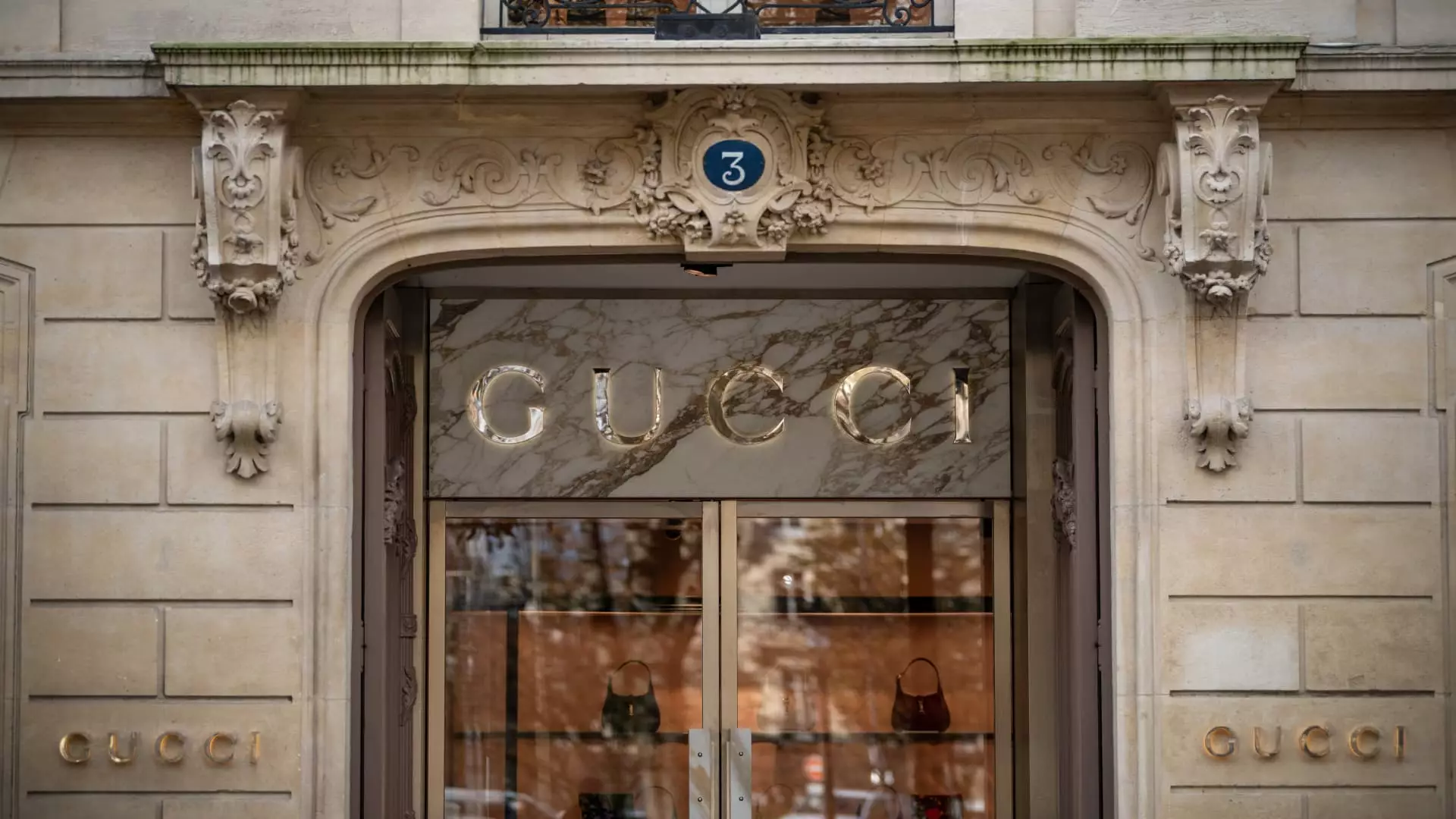In an industry accustomed to opulence and glitz, the recent revenue plunge of Kering, a titan in the luxury goods sector, is nothing short of alarming. The French powerhouse reported a staggering 14% decrease in first-quarter sales, amounting to 3.9 billion euros, which was well below the forecasts of analysts. This drop is not merely statistical; it reflects deeper undercurrents shaping consumer behavior and market dynamics. As Kering’s main brand, Gucci, faced a catastrophic 25% sales decline, the veils of luxury have been pierced, revealing vulnerabilities that many believed had been securely hidden beneath their gold-plated surface.
Macroeconomic Pressures: A Luxury Facade Shattered
The malaise affecting Kering is illustrative of broader economic factors that have slowly but surely begun to suffocate brands that once seemed invincible. With a significant drop in Kering’s revenue across Asia—where sales tumbled by 25%—the importance of the region to luxury brands is laid bare. The indulgent spending habits of Chinese consumers, previously the backbone of luxury retail, are now affected by a cooling economy and rising inflation. This is compounded by a grim narrative emerging from North America and Europe, where sales have similarly contracted by 13%. The high-end market appears to be unraveling, with Kering serving as a canary in the coal mine.
The Leadership Response: A Palliative Approach
François-Henri Pinault, Kering’s Chairman and CEO, acknowledged the “difficult start to the year,” a veiled reference to the turmoil enveloping the sector. While his commitment to executing action plans is commendable, it hints at a lack of immediate, radically innovative solutions to combat such decline. Investors remained unimpressed, as market confidence waned and shares dropped sharply. Pinault’s assurance that the company would “come out stronger” feels more like a corporate mantra than a robust strategy, given the extent of current challenges. The landscape for luxury goods has shifted, and Kering seems to lag, uncertain on how to regain its luster.
New Leadership, Old Problems: The Gucci Conundrum
The appointment of Demna Gvasalia as Gucci’s artistic director was heralded as a potential turning point, yet it has drawn more skepticism than optimism. The controversy surrounding Gvasalia’s prior work with Balenciaga only adds to a cloud of doubt hanging over Gucci’s future. The brand’s recent iterations have failed to resonate with consumers, raising the question of whether new creative leadership will truly translate into revitalized sales, or if it is merely a distraction from deeper-rooted issues. The reliance on a single brand as a core revenue driver has amplified Kering’s vulnerabilities, making it painfully clear that innovation is not just welcomed, but essential for survival.
The Luxury Market’s Broader Implications: A Fragile Future
The luxury sector, often viewed as insulated from the wrath of economic turmoil, is now facing a stark realization. Analysts previously believed that luxury brands could navigate rising tariffs and inflation without losing footing. However, the realities have proven more daunting, with Kering exemplifying how quickly fortunes can change when the market turns against you. What was once considered a bastion of stability is now a fluctuating ecosystem where consumer sentiment can shift almost instantaneously. We are left to ponder whether these setbacks represent a temporary blip in the luxury market or a harbinger of a more detrimental shift.
As Kering confronts these disconcerting challenges, it is clear that the emperor is, in fact, quite vulnerable. While the luxury market may still hold some allure, Kering’s struggles highlight a critical need for brands to adapt, innovate, and connect deeply with their evolving consumer base. In this unpredictable climate, the once-impervious barrier of luxury is indeed starting to show cracks, and the ramifications may echo throughout the entire industry.

